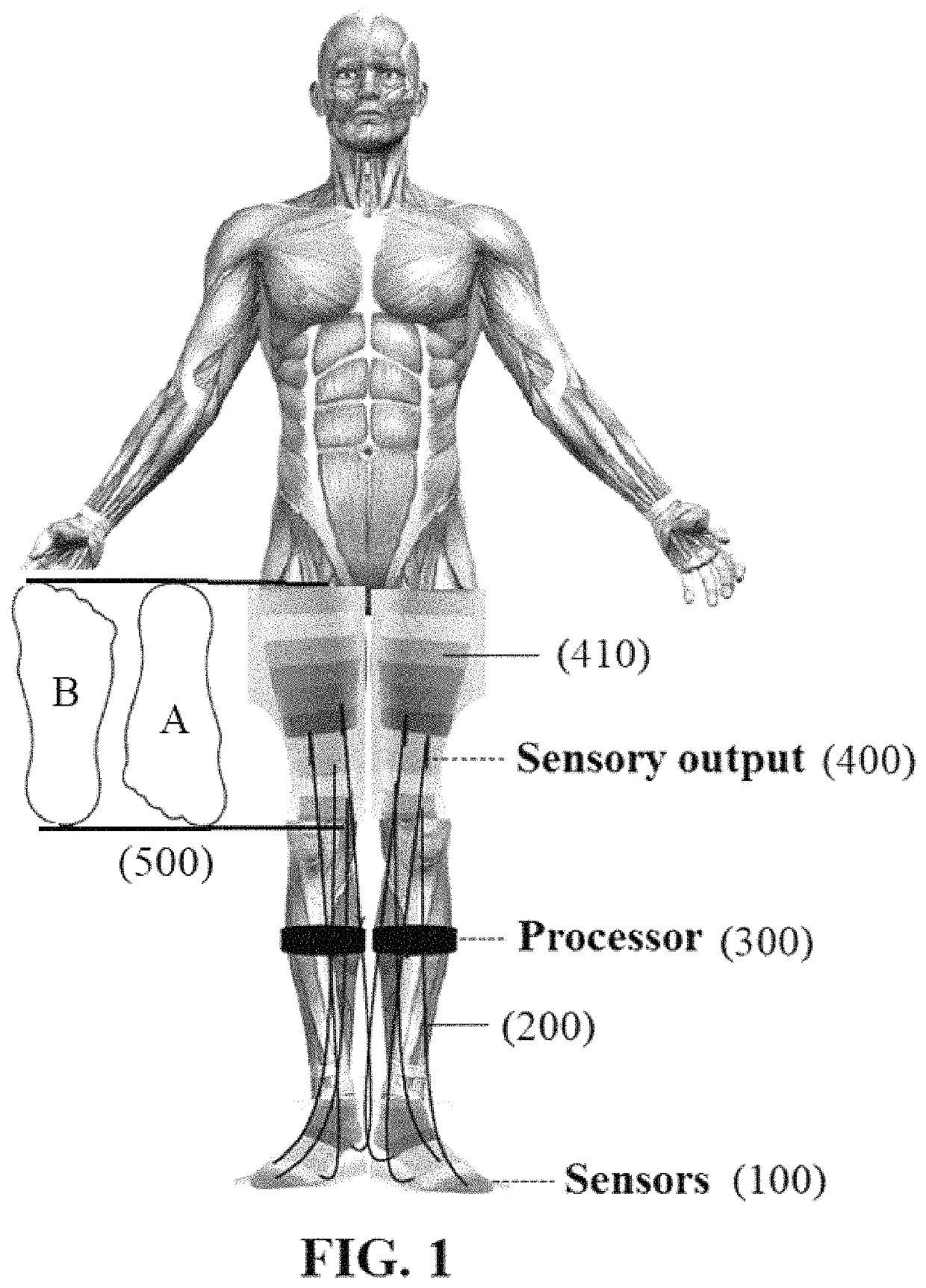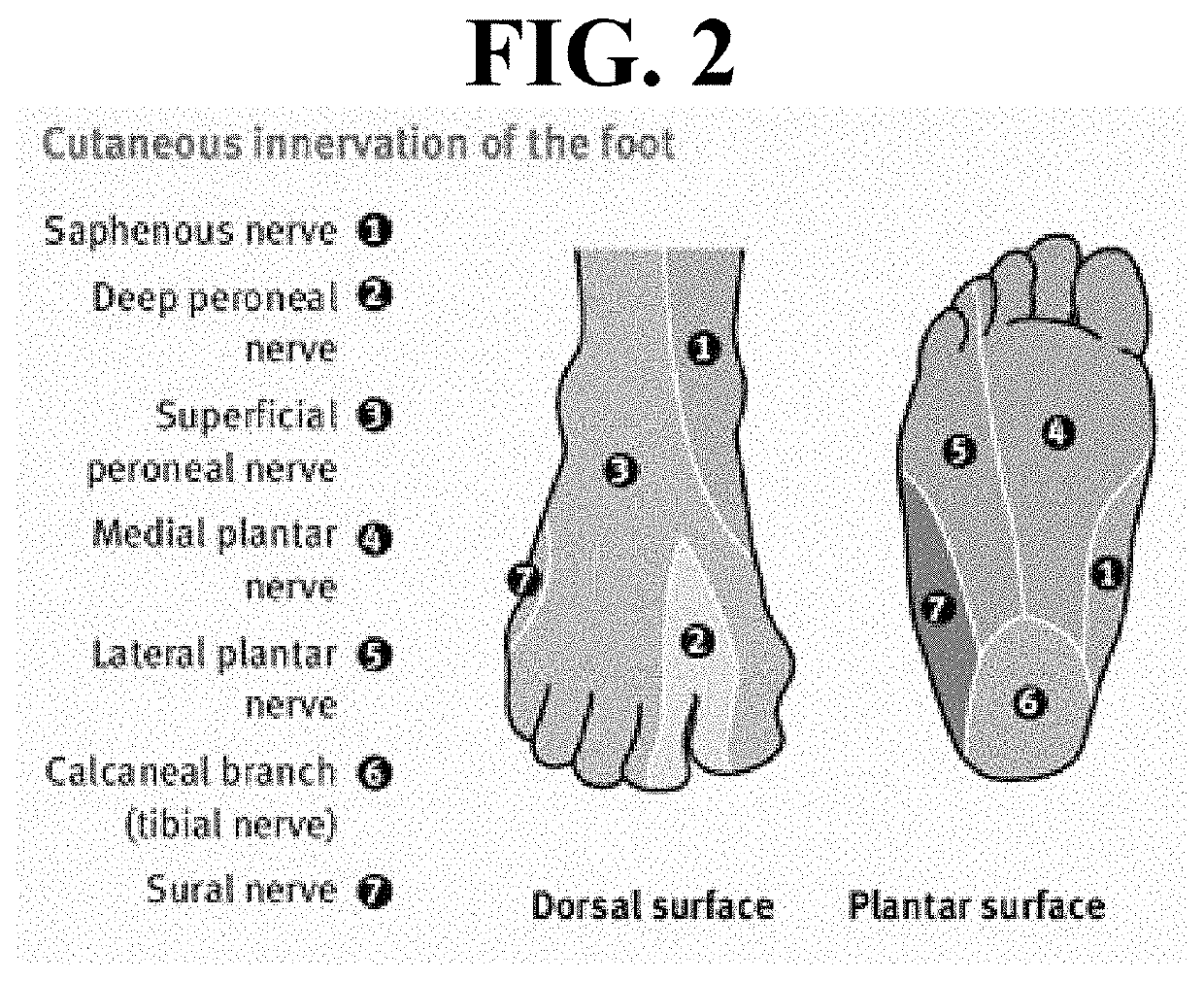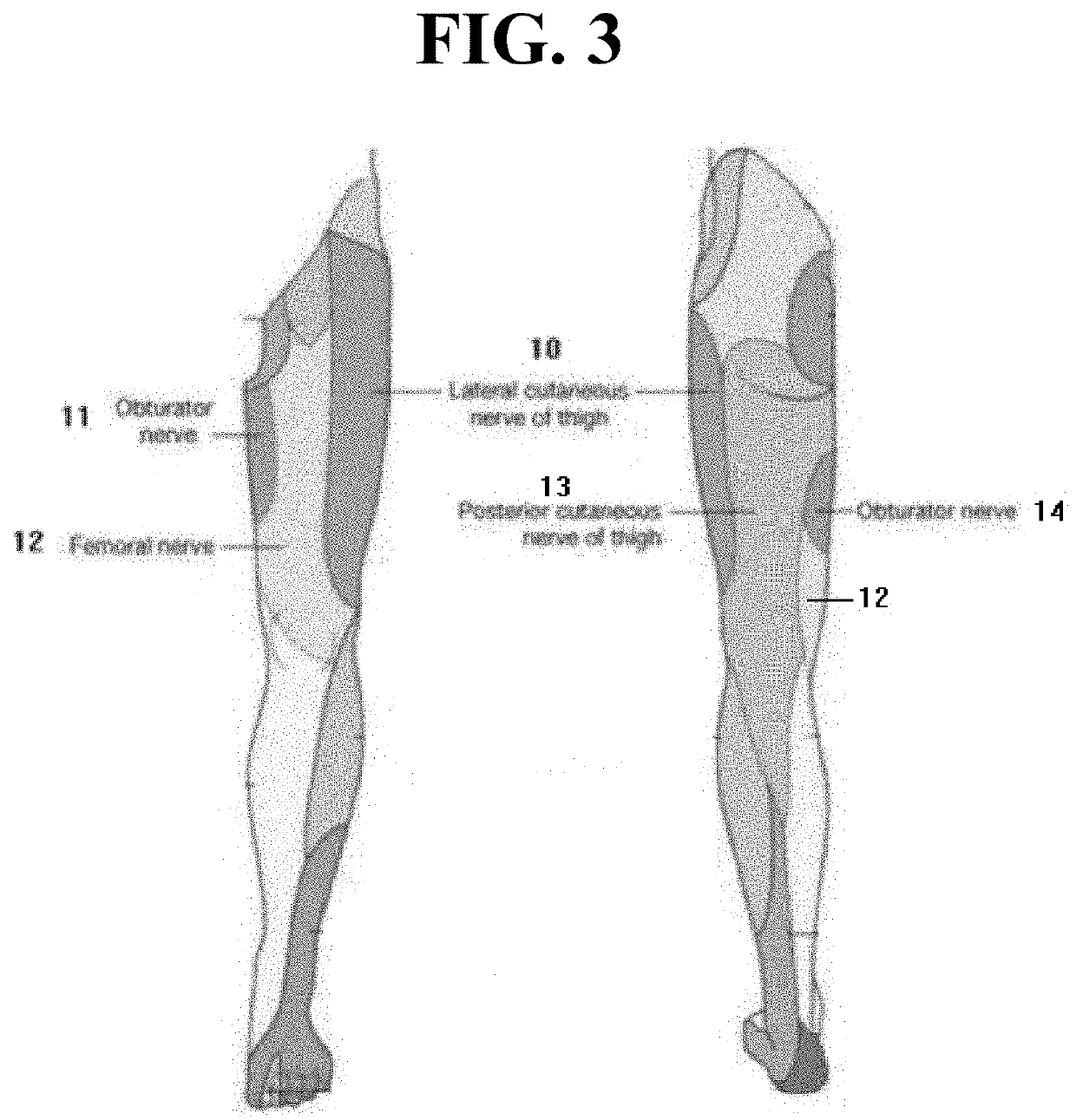Signal transduction device
a transducer and signal technology, applied in the field of medicine, can solve the problems of diabetic neuropathy, loss of sensation, and chronic high blood sugar, and achieve the effects of reducing the risk of diabetes
- Summary
- Abstract
- Description
- Claims
- Application Information
AI Technical Summary
Benefits of technology
Problems solved by technology
Method used
Image
Examples
example
[0064]The device or system as disclosed herein is preferably one that receives one or more input signals from sensors on the foot, ankle or lower limbs, and provides stimuli through sensory output devices such as tactile interface devices positioned over an area of skin not substantially impaired by neurological deficit. It may optionally include one or more other elements besides input sensors, processor and output devices, including those described in the block diagram of FIG. 5. It may include power modules and other power sources, electrical or optical wiring or wireless communication modules.
[0065]The sensor inputs and other device components associated with the output devices are preferably disposed in a single device, but can additionally or alternatively be disposed as a system across a plurality of devices, and / or be disposed in any other suitable manner.
[0066]FIG. 5 is a block diagram showing one example (700) of the system of the invention for receiving input from sensor(...
PUM
 Login to View More
Login to View More Abstract
Description
Claims
Application Information
 Login to View More
Login to View More - R&D
- Intellectual Property
- Life Sciences
- Materials
- Tech Scout
- Unparalleled Data Quality
- Higher Quality Content
- 60% Fewer Hallucinations
Browse by: Latest US Patents, China's latest patents, Technical Efficacy Thesaurus, Application Domain, Technology Topic, Popular Technical Reports.
© 2025 PatSnap. All rights reserved.Legal|Privacy policy|Modern Slavery Act Transparency Statement|Sitemap|About US| Contact US: help@patsnap.com



